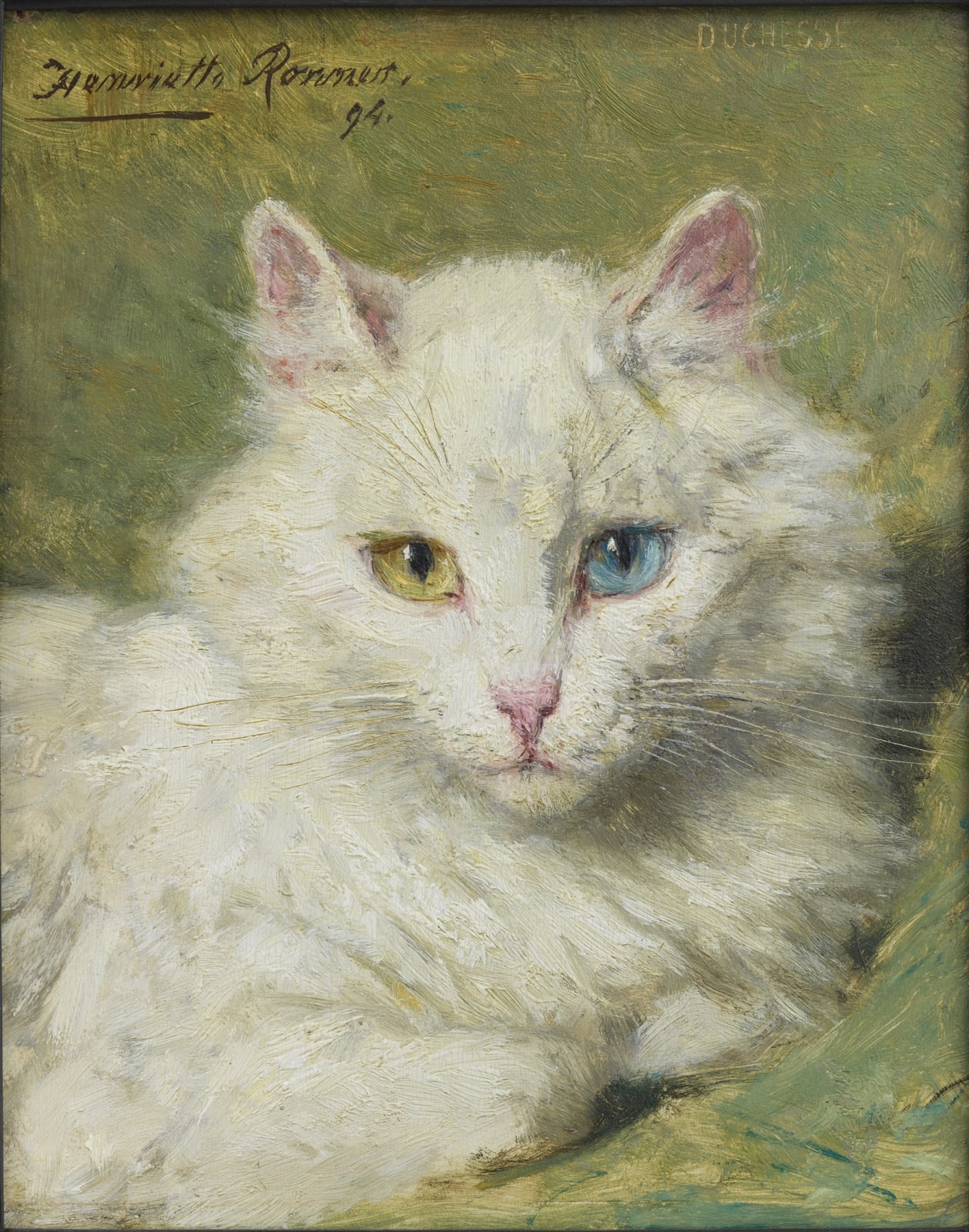Henriëtte Ronner-Knip (1821–1909)
As a descendant of a dynasty of Dutch painters, it is not surprising that Henriëtte from a young age dedicated her life to the arts. On her eleventh birthday, her father Josephus Augustus Knip (1777-1847), gifted her a painter’s easel, recognizing his daughter’s talent. Henriëtte worked from early morning till dark and was only allowed two hours of rest during the day which were spent in a dark room. As Josephus Knip’s career was cut short by complete blindness by 1832, he believed two hours a day in a dark room would prevent Henriette from this same fate.
Henriëtte was taught extensively by her father who advised to specialize in one genre that attracts an audience. Her most important teacher was perhaps nature as she painted the animals around the farm they lived. This choice would prove a wise decision, especially since this became a popular genre during the nineteenth century. Henriëtte’s oeuvre can roughly be divided in three periods: farm animals, dogs, and cats. The first period is characterized by rural subjects from her close surroundings. The second period dates after 1850 when Henriette moved to Brussels with her husband Feico Ronner and became a renowned dog painter. In 1860 she received a Gold Medal at the Levende Meesters exhibition in The Hague for La mort d'un ami. When the painting was exhibited again at the World Art Fair in London two years later, her international reputation was solidified. Henriëtte continued to paint dogs; notably lapdogs belonging to Marie Henriette of Austria and other royals.
From 1870 onwards, Henriëtte’s primary subject matter were cats. For almost forty years, she would portray her models as if they were all individual creatures, each with their own expression. The artist’s choice to change to this commercial subject could not have come at a better time. Throughout Europe the well to do middle class was taking a great liking to cats. Her contemporaries believed her to have a large menagerie while in fact she only had one cat, John, as she thought it too time-consuming to have too many kittens around. She usually borrowed her pussycats, sometimes entire nests.[1] Once, she even put an advertisement in the newspaper, asking for available models. After observing the felines in her studio, she would make paper sculptures in the desired poses and place among props, such as furniture and fabrics. She usually drew regular house cats with an exception of the Maine Coon breed. Only by the end of the nineteenth century interest in different breeds developed. In the 1860s, the first cat exhibition took place in the United States. This trend only followed much later in The Netherlands. In 1890, in Amsterdam, at a showcase, not only different breeds were presented but also different categories for the biggest and the heaviest animal. By then, Henriëtte’s focus on felines was already well on its way.
The subject of the present painting is an odd-eyed cat with one blue and one amber eye. This is a feline form of heterochromia, a condition that also occurs in humans. In many countries, such as Turkey, odd-eyed cats are highly prized with breeding programs to preserve pure white Turkish Angoras with blue and amber eyes. An attention to eyes is particularly interesting given the artist’s family history of eye related diseases. Duchesse was certainly a regal sitter who affirms Henriëtte Knip’s place in the canon of Dutch animal painters.
[1] Harry J. Kraaij, Henriette Ronner-Knip 1821-1909. Een virtuoos dierschilderes, Schiedam 1998, pp. 104-106
Provenance
Private collection, Belgium
Sale, Horta, 17 February 2020, lot 151
Agnew’s, London



